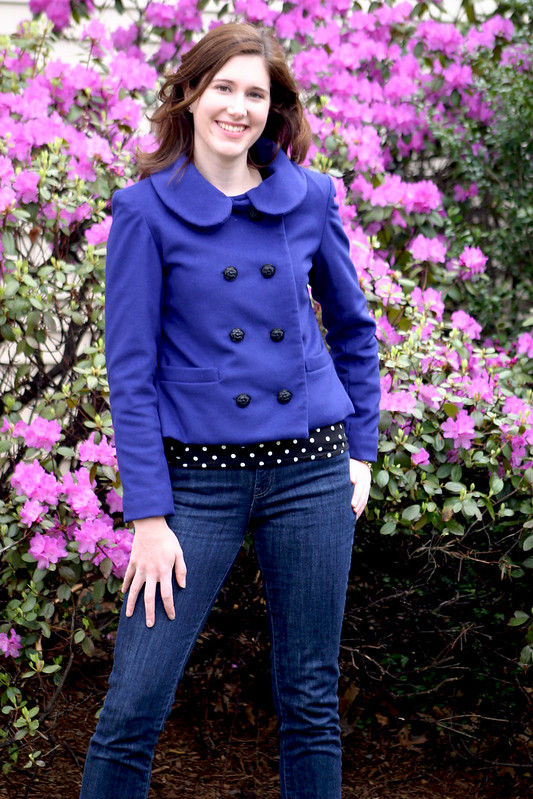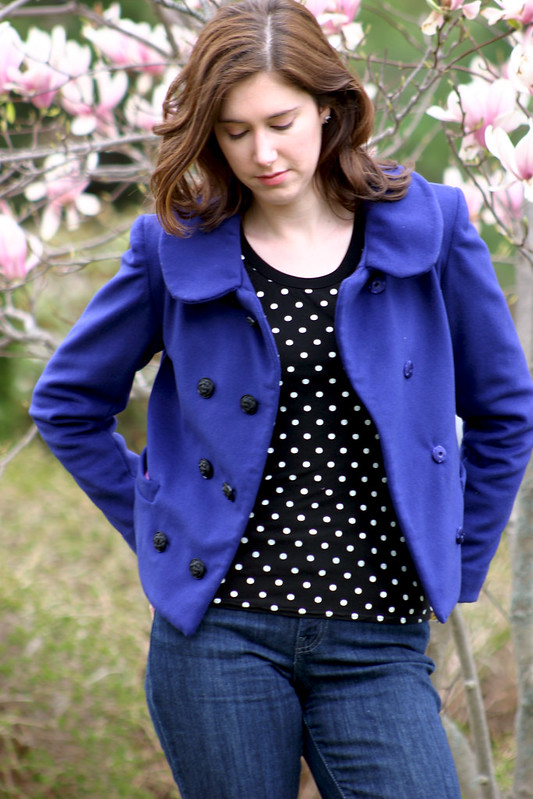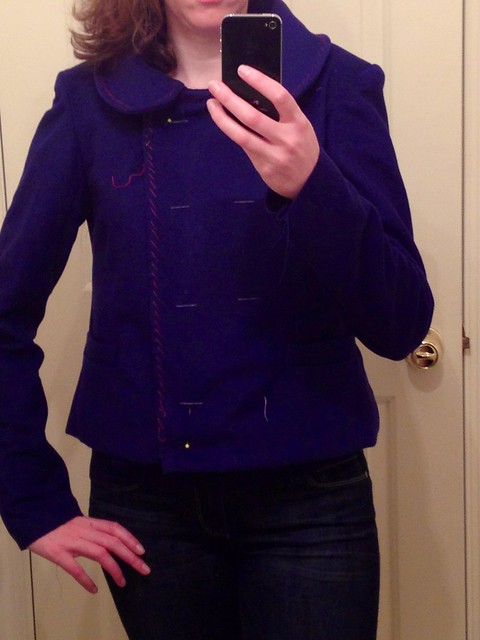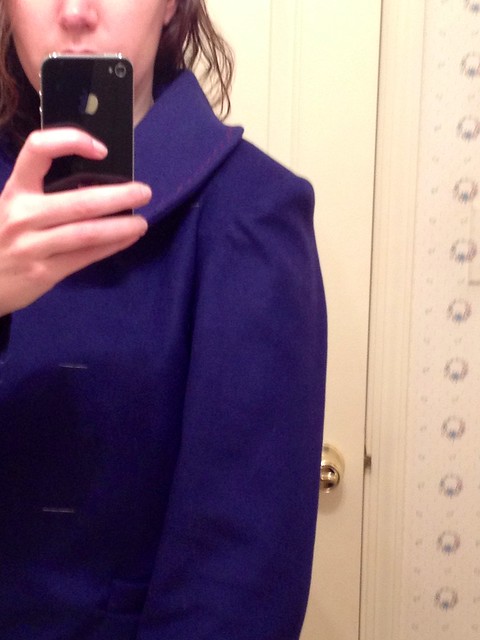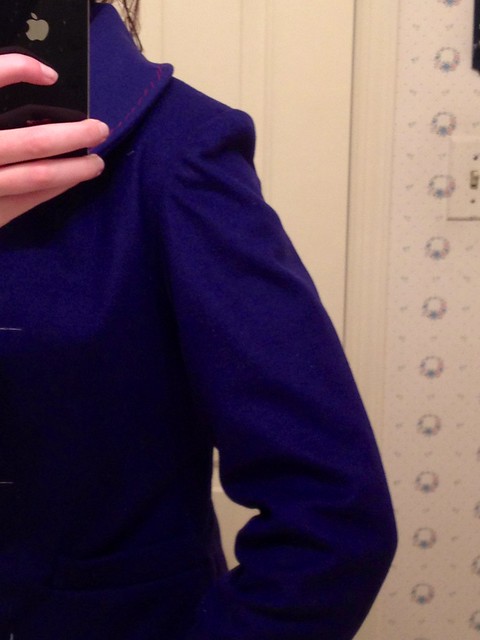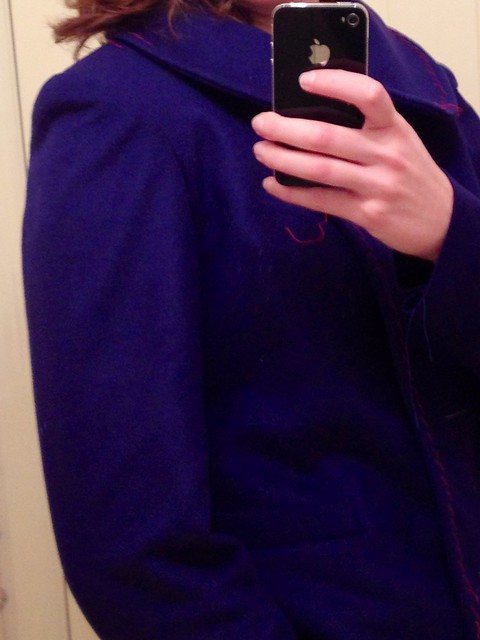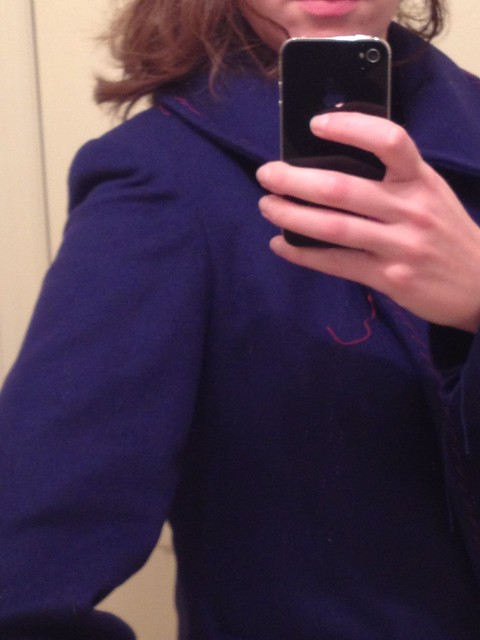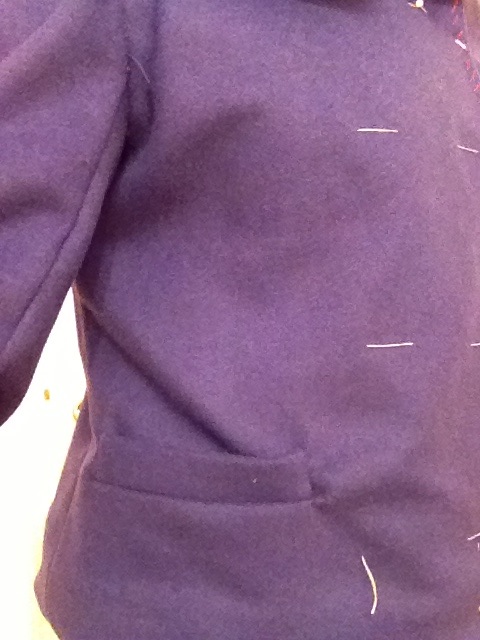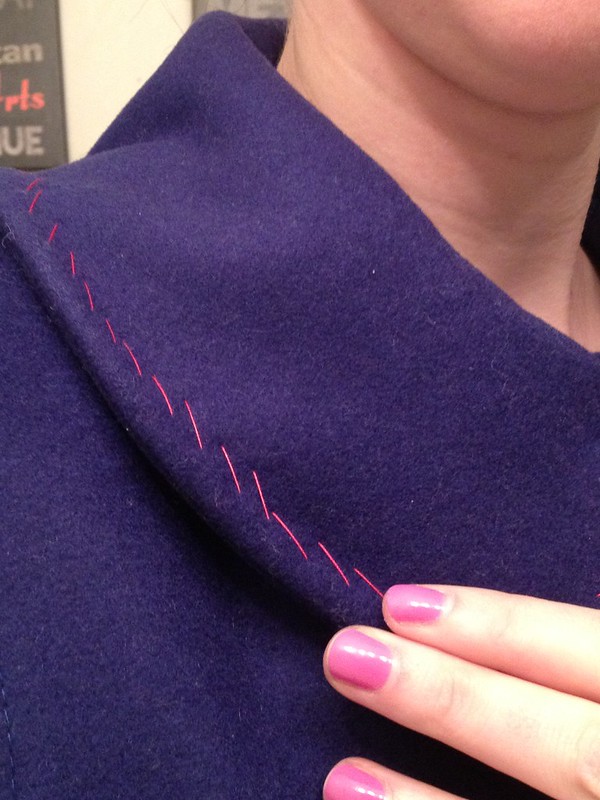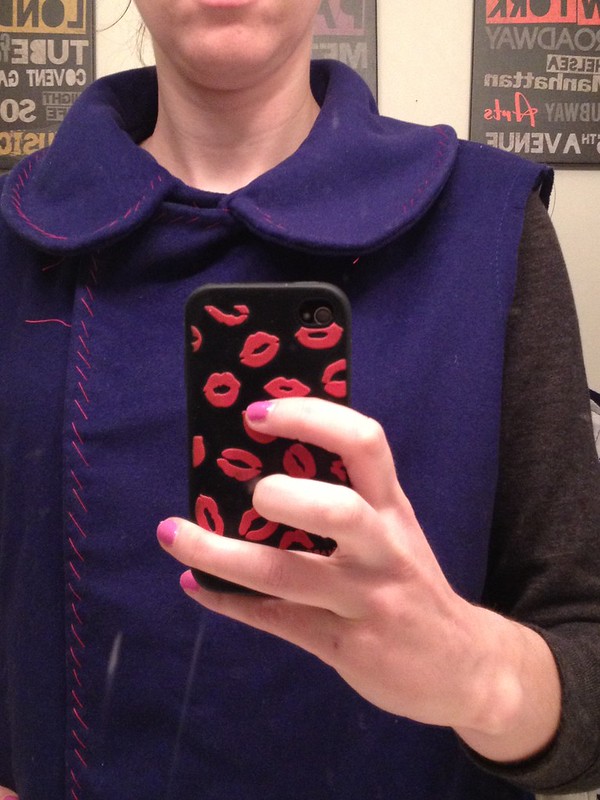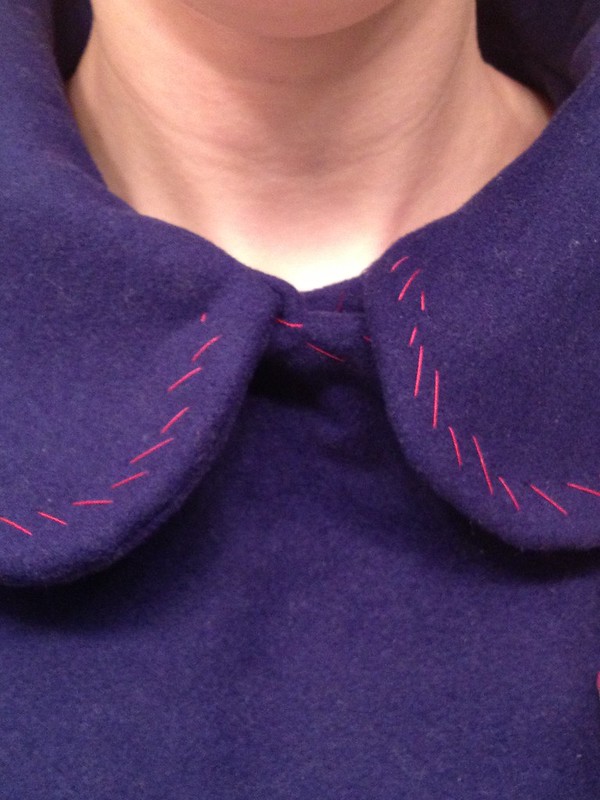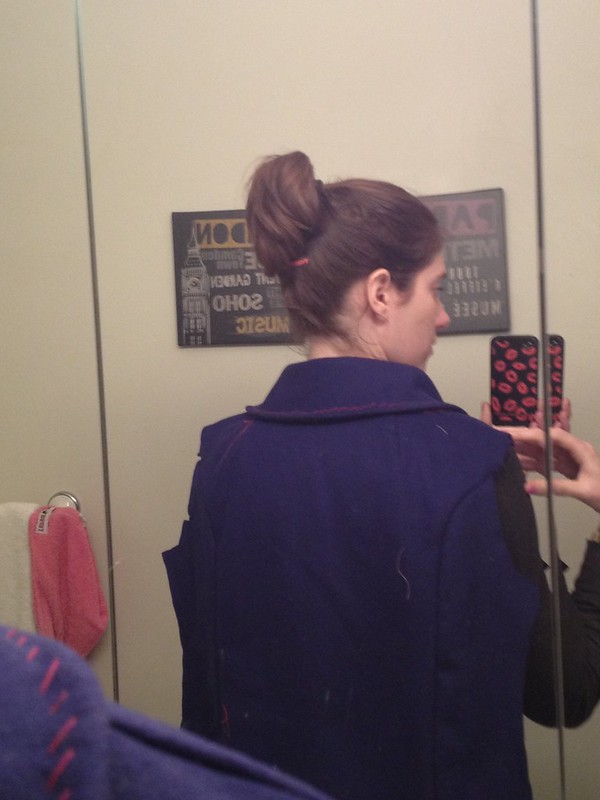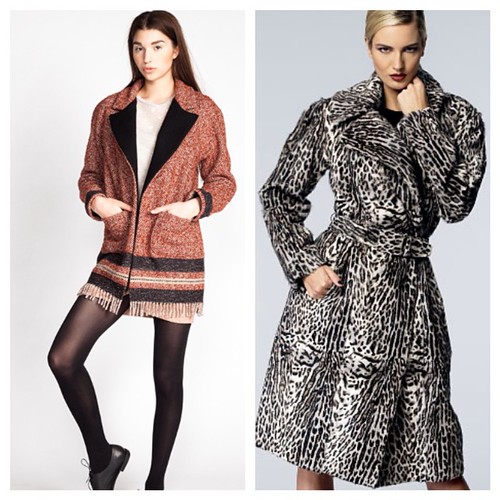
It’s the middle of January, so I suppose it’s time to get cranking on what I’m calling “The Great Coat Project of 2015,” or, my attempt to make a tailored winter coat this year. Prior to starting, I made a quick tailored blazer that boosted my confidence in my tailoring skillz (which you may have seen on Instagram, photos to come), so I’m ready to go!
Of course, I got cold-feet initially – there’s so many variables to take into consideration when launching into a major project like a coat: what kind of fiber/weave/weight of fabric to use, combinations of interfacing to get the right support and drape, should I underline or interline (can’t do both!), how to make the coat warm without adding bulk, hand-tailoring vs fusible tailoring…I could go on. There were quite a few nights recently where I was up to the wee hours of the morning researching and reading and making myself dizzy with the knowledge and contradicting opinions of those who have prior experience making coats. And of course, I doubted my choice in pattern selection at the last minute and put up a poll on Instagram and Twitter last weekend on which coat I should make.
Vogue 1365, on right above, won the poll on Twitter. The Named Patterns Yona coat, on left, won on Instagram. Since I originally planned on making the Vogue coat, I went ahead and cut out the muslin this week to see what the fit was like – if it was bad, I could always use Yona as my backup plan.
To sum up my Vogue 1365 fitting-experience: I’m making the Yona coat now.
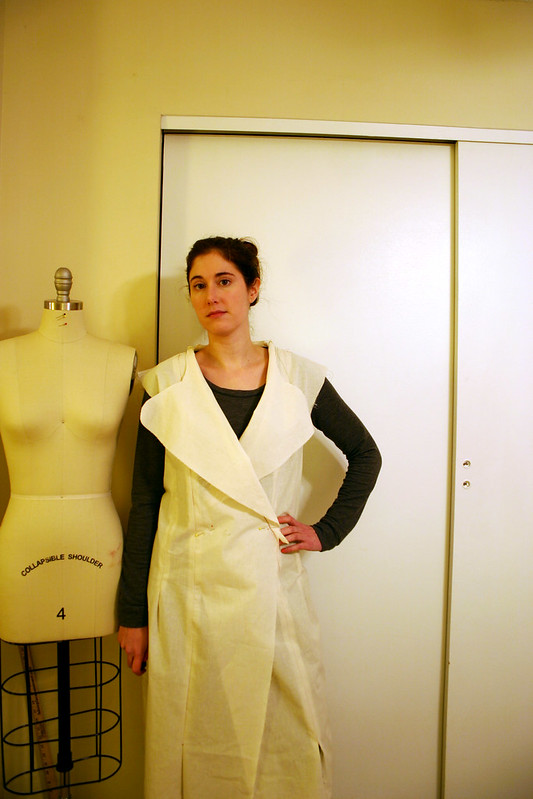
Doesn’t look too bad, right? I’m not standing up straight, so the fronts aren’t lined up correctly. Holy lapel action, Batman! Those are some statement lapels, amiright?

Not too crazy from the side either…
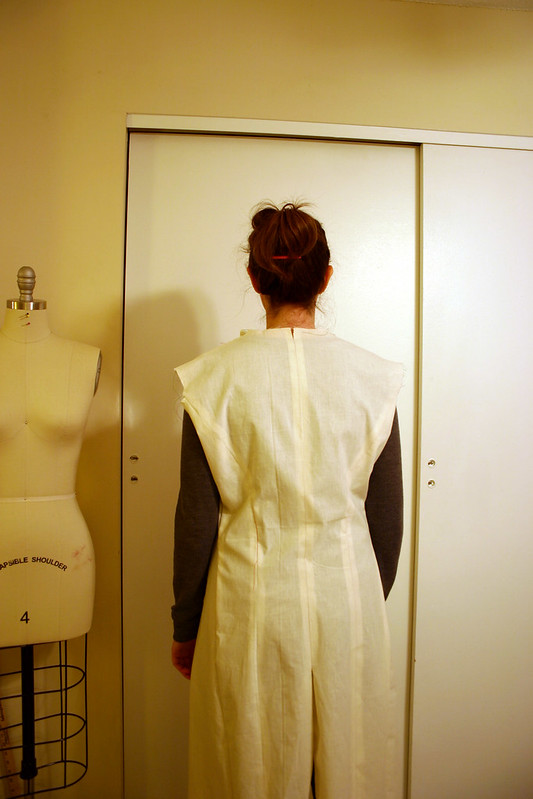
I think the back is ok, too. Setting the sleeves in would alleviate some of the bagginess around the armholes, I wasn’t too concerned with it.
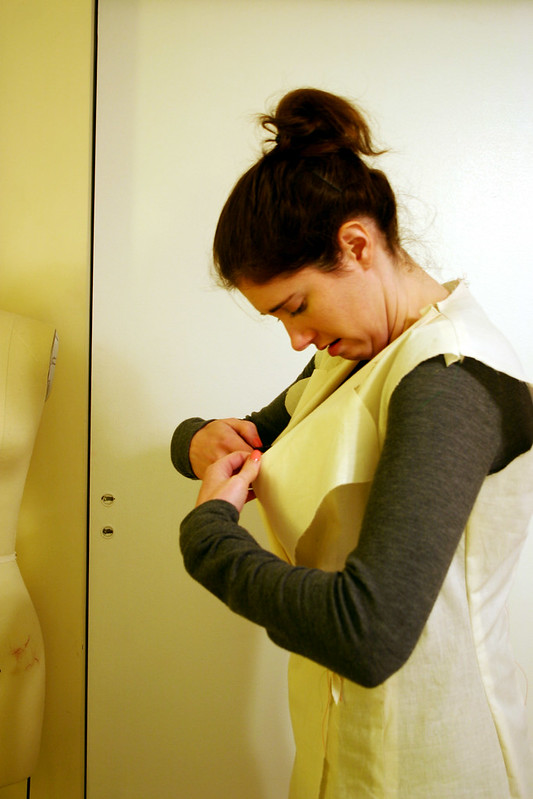
So here’s where it gets good…my friends, this coat is drafted with 10 inches of ease in the bust. After doing some extensive research on coat ease (on one of those recent late nights I referred to), 10″ is standard ease for a loose-fitting coat and is calculated to fit over a jacket and a blouse (here’s a great post on Sewingplum about layering ease for BMV patterns). However, on the model on the pattern envelope and also in the article “Secure a Coat Lining” from the December 2014 issue of Threads, this coat has much more of a semi-fitted look. I cut a straight 10 for this coat, which is typical of what size I make for Vogue patterns, so I figured I would just go down a size in the chest and grade out at the hips – no big deal.
HOWEVER – observe the following photo illustrating where the real issues with this coat lie:
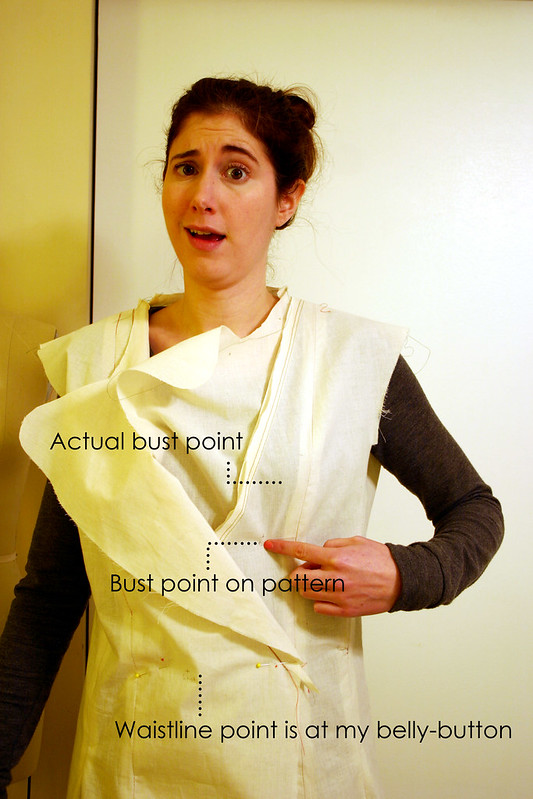
In order to get this coat to fit correctly, there needs to be some major overhauling of the entire front. The bust point is two inches below my actual bust point – I run into this problem from time to time, but never to this dramatic effect! The waistline is almost down to the top of my hip bones by my belly-button. Fixing the waist would be no problem, since I could just adjust along the “lengthen or shorten here” line on the pattern, but altering the pattern to raise the bust to the correct level would affect: the front, front facing, length of the lapel and lapel facing, side front, armhole, and all three parts of the three-piece sleeve. Maybe even the collar, too.
It was at this point that I threw my hands up in the air and said, “fuggedaboutit!” There’s already going to be so much labor put into constructing the coat, since I decided to hand-tailor this project, that I couldn’t really bother/deal/didn’t want to go through with the pain of redrafting half a coat to get it to fit me correctly. Hmm, is there a reason I couldn’t find a single person on the internet that made this coat pattern?

Additionally, the side seams irritated me. No, this is not an error – the side seams are really supposed to hang like that, I checked the line art and it shows the side seams curving towards the back (the front is cut much wider than the back). In my opinion, even though this is an intentional part of the design, it just looks bad – one of the hallmarks of a well-tailored coat is a side seam that hangs perpendicular to the floor, and I want my coat to look well-tailored.
I love the style of this coat, but I’m quitting while I’m still ahead and moving on to the Yona Coat – this is why we make muslins to test-drive patterns before cutting into our nice fashion fabric! Yesterday evening, I made a muslin of the Yona pattern and the fit is absolutely perfect – more to come on that, I can’t wait to share!
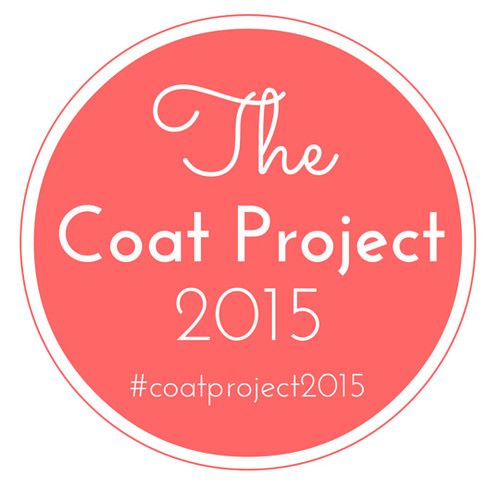
Are you making a coat this winter? Sew along with me! Use #coatproject2015 on Instagram to tag your progress so we can all see what you’re working on!

